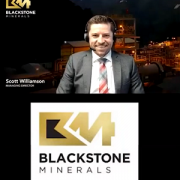Adjustments Expected, But Rules to Stay the Same
THE CONFERENCE CALLER: The face of the global minerals sector may well be changing as it adjusts to the growing demands of the burgeoning de-carbonated market, but some of the industry’s key investment fundamentals will no doubt remain in place moving forward. By Mark Fraser
If Vertical Events’ 2020 New World Metals (NWM) Conference showed punters anything, it’s that while the next generation of miners are expecting to act a little differently than their older peers when it comes to achieving acceptable environmental outcomes, they will nevertheless continue playing by some of the traditional rules if they want to launch new mineral projects.
Factors such as location, geology and global demand will still have a role to play when it comes to raising finance for exploration and mining ventures, even as so-called modern issues pertaining to sustainability and long-term supply dynamics suck up more air time.
This all became apparent during some of the forum’s nickel presentations as they separately ventured into both old fashioned and new frontier corporate territories.
In the case of Western Australian explorer Estrella Resources (ASX: ESR) – which is hoping to break into the battery and electric vehicle (EV) markets via its wholly-owned Carr Boyd nickel-copper sulphide project located some 80 kilometres north-north east of regional mining hub Kalgoorlie-Boulder in WA – its current approach to life couldn’t be more conventional.
Unlike many of the other juniors presenting at the Perth show, Estrella didn’t mention much about potential off-take partners or highlight the technologies it might look to when processing the ore it eventually expects to dig up.
Rather, its initial agenda is quite straight-forward – to “unlock nickel sulphide potential and build shareholder value” in a Tier-1 mining jurisdiction.
Comprising three mining and six exploration licences (as well as a “miscellaneous” one), Carr Boyd covers 259 square kilometres of continuous tenure on its namesake layered complex – a 75sqkm mafic igneous structure hosting several nickel and copper sulphide occurrences, with the most important being the Carr Boyd Rocks mine, which in its day (1973-1977 under the stewardship of WMC) yielded 202,100 tonnes of ore grading 1.43 per cent nickel and 0.46 per cent copper to produce a 9.7 per cent nickel concentrate.
At the moment Estrella’s money is on the T5 target.
Discovered last year, it was exposed after it and its surrounding area was subjected to some high powered moving-loop transient electromagnetic surveying and extensive geochemical auger drilling.
During 2020 diamond drilling down to 251 metres at T5 hit mineralisation at 165.2m, with interesting intercepts thus far including 3.8m at 0.48 per cent nickel and 0.31 per cent copper (with 0.4m at 1.12% nickel and 1.07% copper from 165.2m) as well as 0.4m at 0.33 per cent nickel and 0.28 per cent copper from 173.6m.
Not surprisingly, Estrella is now upping its field ante, with stage two drilling comprising 8 to 10 RC and diamond holes totalling 5000m over 40 by 40m spacings.
“We’ve currently got two rigs on site, increasing the camp, increasing the personnel, increasing the management teams, and that’s where we are today,” managing director Chris Daws told NWM delegates.
“And in the new year it will be rather interesting for us – we are well funded, and we’re highly leveraged, and we are going for a bit of success.”
Meanwhile, looming producer Blackstone Minerals (ASX: BSX) is also relying on some old school fundamentals as it advances its ultra-green and clean Ta Khoa nickel-platinum group element-cobalt project in Vietnam.
Like Estrella, Blackstone is essentially targeting the lithium-ion battery market.
Unlike the WA explorer, though, Blackstone is well advanced in its endeavours – so much so that South Korea’s largest cathode manufacturer, Ecopro, now has a significant stake (over 50%) in the company.
Although all of the basic building blocks of this (approximate) $1 billion new generation operation are stacking up – and it now has the production of a green critical mineral product (nickel sulphate) within its sights – Ta Khoa is still something of a traditional nickel play.
For a start it is essentially a brownfields project, with the existing mine having been originally tackled 2013-16, and the previous owners leaving behind some much-needed operational infrastructure.
Second, Ta Khoa’s mineralisation consists of nickel sulphides – it’s not lateritic like many other South East Asian deposits – meaning processing of the ore shouldn’t be too problematic or complicated.
Nor should adding to the project’s reserves, according to Blackstone boss Scott Williamson, who said the company currently had 25 massive outcropping sulphide targets that were undrilled at surface.
“This is like going into Kambalda 50 years ago, and we are just shooting fish in a barrel,” he mused.
“It’s systematic exploration – we have our own electromagnetics and geophysics crews, and we have nine drill rigs operating through this belt.”
Although this may have a blast-from-the-past ring about it, Blackstone is expecting to get with the times and confirm its green credentials by hooking Ta Khoa up with South East Asia’s largest hydroelectric power plant, a renewable resource which is “right on our doorstep.”
“This is why we believe we’ve got this ability to produce a green nickel product,” Williamson noted.
“When you are producing your metals for lithium-ion batteries, it’s important to understand how much carbon is being burnt and whether there is renewable power in that process of producing those metals.
“We’ve got this opportunity.”
One outfit which is looking to produce critical green metals sourcing nickel lateritic ore, though, is the dual-listed Clean TeQ (ASX: CLQ, TSX: QTCQX and CTEQF), which is developing the Sunrise battery minerals project in mining-friendly central New South Wales – again to service the global automobile sector.
Like Williamson, Clean Teq chief executive Sam Riggall (with the help of a video presentation) was keen to look at basic project fundamentals and potential markets.
His comments about the future of the AV industry, however, suggested that the new crop of ASX listed mining developers will need to take a more holistic view of supply chain dynamics when it came to managing risk – even if it involves becoming familiar with the machinations of another sector.
“If there is one message I would like to leave you with today, it’s that the cost of integration is actually very high if car makers don’t get this right,” Riggall said.
“In other words, we believe that in the next few years it’s highly likely we’ll see one or two global car makers make a decision about investment in raw materials.
“There is absolutely no way, even if you can secure the metals you need, that you can insulate yourself from … pricing and costs risks unless you have some form of ownership of the raw materials.
“This is obviously not a message that car makers like to hear, but it is the reality.”







